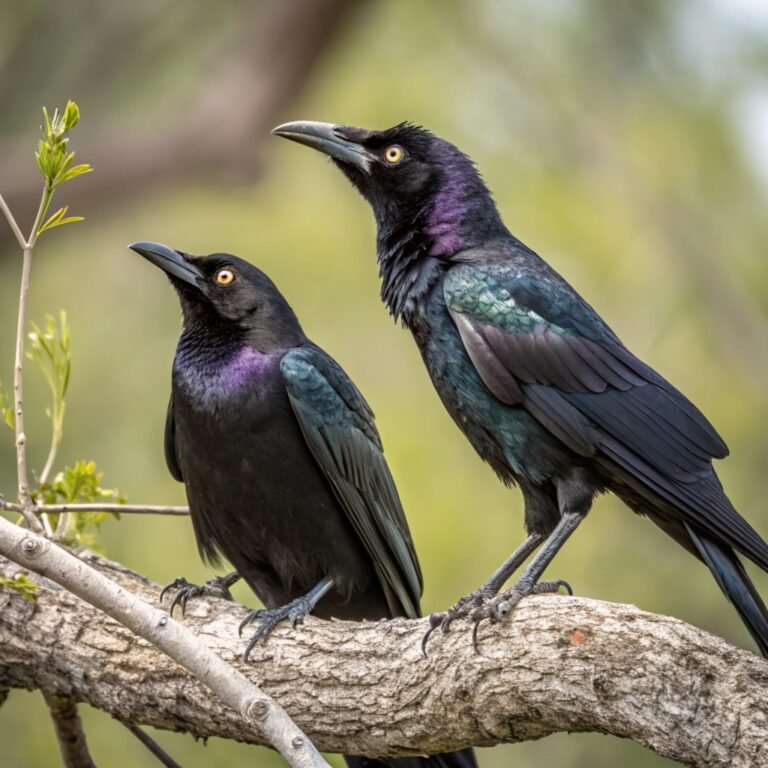10 Amazing Birds with Long Necks: A Comprehensive Guide to These Unique and Fascinating Creatures
Among the most striking and captivating avian features is the long neck, an adaptation that has evolved in various species across different habitats and ecosystems.
The world of birds is a realm of incredible diversity, where nature’s creativity shines through in myriad forms.
These elongated necks serve as more than just aesthetic marvels; they are functional marvels that play crucial roles in survival, feeding, and even courtship rituals.

Key Takeaways
Before we dive into the details of these remarkable birds, let’s highlight some key points about long-necked avian species:
- Adaptive Advantage: Long necks provide birds with enhanced visibility and reach, crucial for spotting predators and foraging.
- Habitat Diversity: These birds inhabit various environments, from wetlands to grasslands, adapting their necks to suit specific ecological niches.
- Feeding Specialization: Long necks allow for precise hunting in water bodies and efficient grazing on land.
- Size Variation: Long-necked birds range from small hummingbirds to large flightless species like ostriches.
- Evolutionary Marvel: The development of long necks in birds is a testament to natural selection and adaptive radiation.
- Behavioral Significance: Long necks play a role in courtship displays and social interactions among many species.
- Conservation Concerns: Several long-necked bird species face threats due to habitat loss and climate change.
- Migratory Patterns: Many long-necked birds undertake impressive migrations, covering vast distances annually.
- Cultural Importance: These birds often hold symbolic significance in various cultures and ecosystems.
- Research Focus: Long-necked birds continue to be subjects of scientific study, offering insights into avian evolution and ecology.
Ostrich
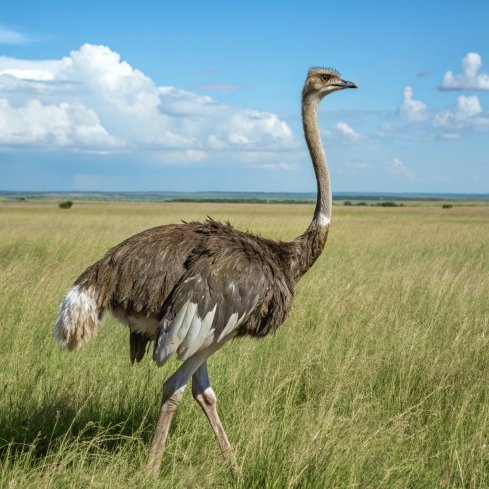
The ostrich, scientifically known as Struthio camelus, stands as the tallest and heaviest of all living bird species, making it a true giant in the avian world. Native to Africa, this flightless bird has adapted remarkably to life on the ground, with its long neck playing a crucial role in its survival strategy.
An adult ostrich can reach heights of up to 2.7 meters (8.9 feet) and weigh as much as 145 kilograms (320 pounds). The ostrich’s neck, which can grow up to 1 meter (3.3 feet) in length, serves multiple purposes.
Primarily, it allows the bird to have an expansive field of vision, crucial for spotting predators across the vast African savannas and grasslands where it resides.
This heightened vantage point is essential, as ostriches rely on early detection and their incredible speed—they can run up to 70 kilometers per hour (43 mph)—to evade threats.
The long neck also aids in foraging, enabling ostriches to reach a variety of food sources, from ground-level vegetation to fruits and leaves at higher levels. Interestingly, contrary to popular belief, ostriches do not bury their heads in the sand.
This myth likely originated from their behavior of lying low and pressing their long necks to the ground to avoid detection when threatened, showcasing another adaptive use of their distinctive anatomy.
Emu
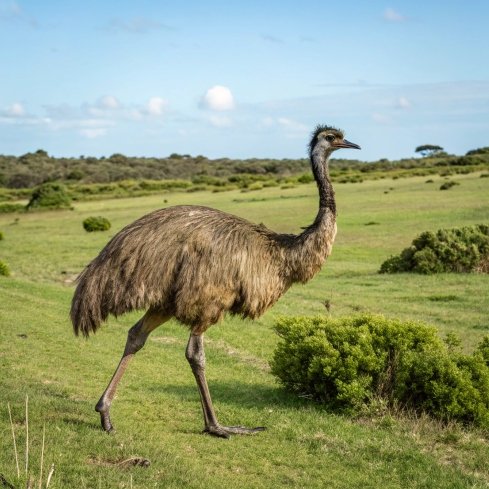
The emu, Dromaius novaehollandiae, is Australia’s largest native bird and the only extant member of its genus. This flightless bird is renowned for its impressive stature and distinctive appearance, standing at heights of up to 1.9 meters (6.2 feet) and weighing between 30 to 45 kilograms (66 to 99 pounds).
The emu’s long neck, covered in blue-black plumage, is a defining feature that sets it apart in the Australian landscape. This elongated neck serves multiple purposes in the emu’s daily life.
Primarily, it aids in foraging, allowing the bird to reach a variety of food sources, from ground-level plants to fruits and insects at higher levels. The neck’s flexibility also enables emus to be vigilant, constantly scanning their surroundings for potential threats.
In the arid and semi-arid regions of Australia where emus often reside, this heightened awareness is crucial for survival.
Interestingly, male emus use their long necks during the breeding season to produce deep, booming calls that can be heard up to two kilometers away, attracting females and establishing territory.
The emu’s adaptability, partly due to its long neck, has allowed it to thrive in diverse Australian habitats, from coastal areas to the outback, showcasing the evolutionary success of this unique avian design.
Goliath Heron

The Goliath Heron, Ardea goliath, stands out as the largest heron in the world, earning its name from its impressive size.
This majestic bird, found in sub-Saharan Africa and parts of Southwest Asia, is a true giant among wading birds, with a height reaching up to 1.5 meters (5 feet) and a wingspan of up to 2.3 meters (7.5 feet).
The Goliath Heron’s most striking feature is its exceptionally long neck, which plays a crucial role in its hunting strategy. This elongated neck allows the bird to stand motionless in shallow waters, patiently waiting for prey before striking with lightning speed and precision.
The Goliath Heron’s diet primarily consists of large fish, but it also feeds on frogs, small mammals, and reptiles. Its long neck not only aids in hunting but also provides an elevated vantage point to spot potential threats or prey from a distance.
The bird’s habitat typically includes large lakes, swamps, mangrove wetlands, and the edges of rivers. Despite its size, the Goliath Heron is known for its graceful movements and patient hunting technique, often standing still for long periods before making a swift, accurate strike.
This combination of size, patience, and precision, facilitated by its long neck, makes the Goliath Heron a formidable predator and a fascinating subject for bird enthusiasts and researchers alike.
Great Egret
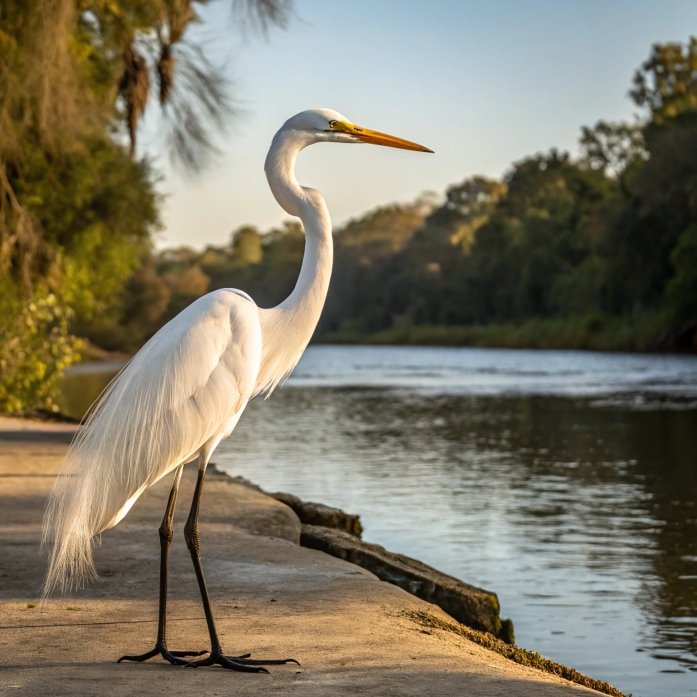
The Great Egret, Ardea alba, is a striking example of avian elegance, renowned for its pure white plumage and graceful long neck. This large heron species is widely distributed across the globe, found on every continent except Antarctica.
Standing at heights of up to 1 meter (3.3 feet) with a wingspan reaching 1.7 meters (5.6 feet), the Great Egret is a prominent figure in wetland ecosystems. Its most distinctive feature, the long S-curved neck, serves multiple crucial functions.
During hunting, the Great Egret can extend its neck with incredible speed, allowing for precise strikes at fish and other aquatic prey. The neck’s flexibility also enables the bird to adopt various postures, from a hunched position for stealth to a fully extended stance for vigilance.
In breeding season, the Great Egret’s neck takes on added significance as it develops fine, lacy plumes known as aigrettes, which play a role in courtship displays.
These plumes were once highly prized in the fashion industry, leading to severe population declines until conservation efforts were implemented. Today, the Great Egret serves as a symbol of conservation success and wetland health, its presence often indicating a thriving ecosystem.
The bird’s adaptability to various aquatic habitats, from coastal marshes to inland ponds, showcases the versatility of its long-necked design in different environmental contexts.
Anhinga

The Anhinga, Anhinga anhinga, also known as the snakebird or darter, is a fascinating water bird renowned for its unique appearance and behavior. Native to the warm, shallow waters of the Americas, this bird is instantly recognizable by its long, snake-like neck, which gives rise to its colloquial name.
The Anhinga’s neck is not just a distinctive feature but a highly specialized tool essential for its survival. When swimming, the Anhinga submerges its body, leaving only its slender neck and head above water, creating an uncanny resemblance to a snake—a sight that often startles unsuspecting observers.
This adaptation allows the bird to move stealthily through water, approaching prey with minimal disturbance. The Anhinga’s long neck enables it to strike at fish with incredible speed and precision, spearing them with its sharp, pointed beak.
Unlike many water birds, the Anhinga lacks oil glands to waterproof its feathers, which allows it to dive and swim underwater with ease. However, this adaptation necessitates frequent drying, and the bird is often seen perched with wings spread, its long neck extended to catch the sun and wind.
The Anhinga’s unique physiology and behavior, centered around its remarkable neck, make it a subject of fascination for birdwatchers and researchers, offering insights into the diverse adaptations of aquatic birds.
Trumpeter Swan
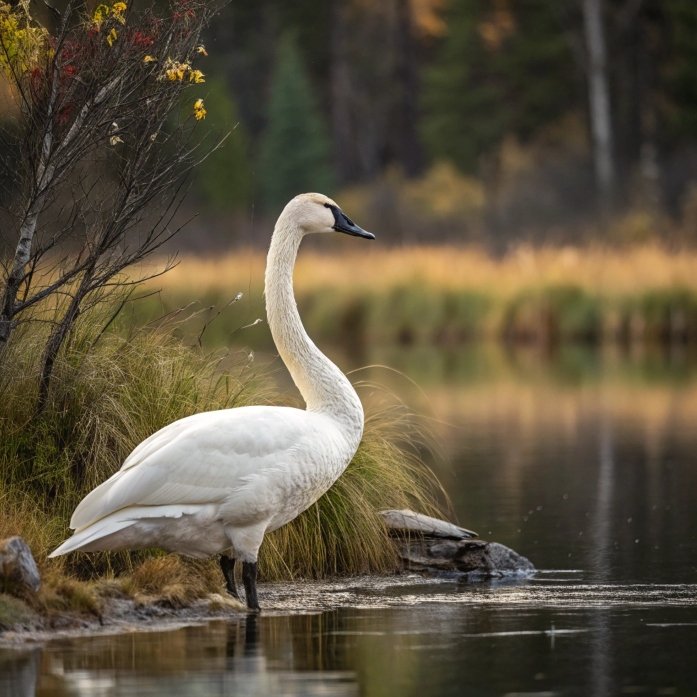
The Trumpeter Swan, Cygnus buccinator, stands out as North America’s largest native waterfowl species, embodying grace and majesty in aquatic environments.
This impressive bird, with its distinctive long neck, can reach lengths of up to 1.8 meters (6 feet) from beak to tail, with a wingspan that can exceed 3 meters (10 feet). The Trumpeter Swan’s elongated neck serves multiple crucial functions in its daily life.
Primarily, it allows the swan to reach underwater vegetation in shallow lakes and marshes, which forms the bulk of its diet. The flexible neck also enables the bird to preen its feathers effectively, maintaining the waterproof quality essential for its aquatic lifestyle.
During the breeding season, the long neck plays a significant role in courtship displays, with pairs engaging in synchronized neck movements to strengthen their bond. The swan’s name comes from its resonant, trumpet-like call, which is amplified by its long windpipe coiled within the breastbone.
Once threatened with extinction due to overhunting and habitat loss, the Trumpeter Swan has become a conservation success story, with populations rebounding significantly in recent decades.
Today, these majestic birds serve as indicators of wetland health and symbols of wilderness preservation, their presence in northern lakes and rivers a testament to successful wildlife management efforts.
Sandhill Crane
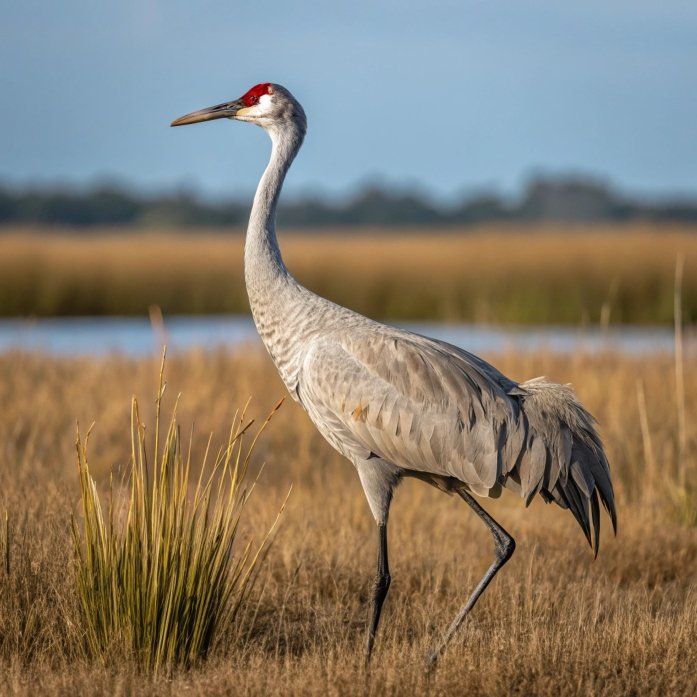
The Sandhill Crane, Antigone canadensis, is a striking and charismatic bird species known for its elegant appearance and captivating courtship dances. Standing at heights of up to 1.2 meters (4 feet), with a wingspan reaching 2 meters (6.5 feet), these birds are easily recognizable by their long necks and legs.
The Sandhill Crane’s elongated neck serves multiple purposes in its daily life and survival. During foraging, the long neck allows the crane to probe deep into marshes and fields for a variety of food sources, including plants, grains, insects, and small animals.
The neck’s flexibility also enables the bird to maintain vigilance while feeding, constantly scanning its surroundings for potential threats. Perhaps most famously, the Sandhill Crane’s long neck plays a crucial role in its elaborate courtship rituals.
During these displays, pairs perform synchronized dances involving graceful neck movements, leaps, and vocalizations, creating a spectacular sight that has captivated humans for centuries.
These cranes are known for their impressive migrations, with some populations traveling thousands of miles between breeding and wintering grounds. Their long necks aid in efficient flight posture, tucked back in an S-shape to reduce drag.
The Sandhill Crane’s adaptability to various habitats, from arctic tundra to subtropical marshes, showcases the versatility of its long-necked design across different ecosystems.
Southern Cassowary
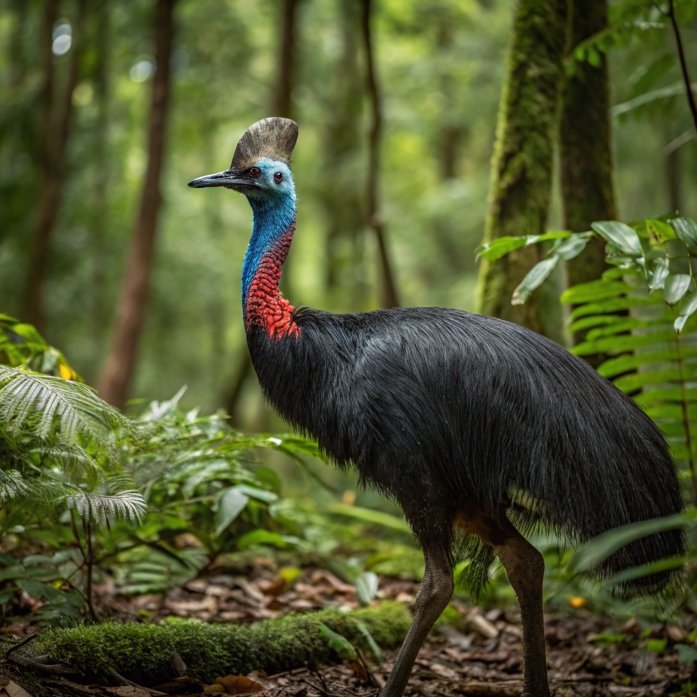
The Southern Cassowary, Casuarius casuarius, is a remarkable and imposing bird native to the tropical rainforests of northeastern Australia, New Guinea, and surrounding islands.
Standing up to 1.7 meters (5.6 feet) tall and weighing up to 76 kilograms (167 pounds), it is the third-tallest and second-heaviest living bird, surpassed only by the ostrich and emu. The cassowary’s most striking feature is its long, muscular neck adorned with vibrant blue and red skin.
This colorful neck serves multiple purposes in the bird’s life. The bright colors act as a warning signal to potential predators, indicating the cassowary’s formidable defensive capabilities, which include powerful kicks and sharp claws.
The long neck also aids in foraging, allowing the cassowary to reach fruits high in the forest canopy, playing a crucial role in seed dispersal and forest ecology.
Interestingly, the cassowary’s neck houses a unique adaptation: a helmet-like structure called a casque, made of keratin, which may amplify low-frequency sounds in the dense forest environment.
This flightless bird’s powerful build and long neck enable it to navigate through thick undergrowth with ease, making it a true forest specialist.
Despite its prehistoric appearance and reputation as one of the world’s most dangerous birds, the Southern Cassowary faces significant threats from habitat loss and human encroachment, highlighting the need for conservation efforts to protect this unique species and its vital role in tropical ecosystems.
Little Blue Heron
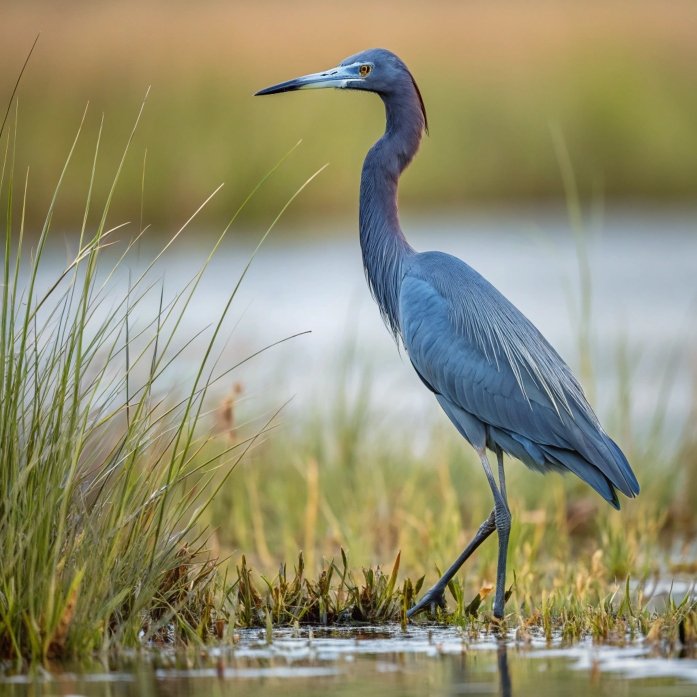
The Little Blue Heron, Egretta caerulea, is a small but elegant wading bird known for its unique coloration and slender profile.
Standing at about 60-70 centimeters (24-27 inches) tall, this heron species is distinguished by its long, graceful neck which plays a crucial role in its feeding and hunting strategies. What makes the Little Blue Heron particularly fascinating is its dramatic color change as it matures.
Young birds start life with pure white plumage, resembling egrets, before gradually transitioning to a slate-blue coloration in adulthood. This color transformation occurs over the bird’s first year, creating a striking visual contrast within flocks.
The Little Blue Heron’s long neck serves multiple purposes in its daily life. When hunting, the bird can extend its neck rapidly to snatch prey from the water or retract it into an S-shape for a more stealthy approach.
The flexibility of the neck also allows for precise movements when stalking fish, crustaceans, and other small aquatic animals in shallow waters. During flight, the heron tucks its long neck into an S-curve, creating an aerodynamic profile.
Found in coastal areas, wetlands, and inland water bodies across the Americas, the Little Blue Heron’s adaptable nature and efficient hunting techniques, facilitated by its long neck, have allowed it to thrive in various aquatic habitats.
Its presence often indicates healthy wetland ecosystems, making it an important species for environmental monitoring and conservation efforts.
Greater Flamingo
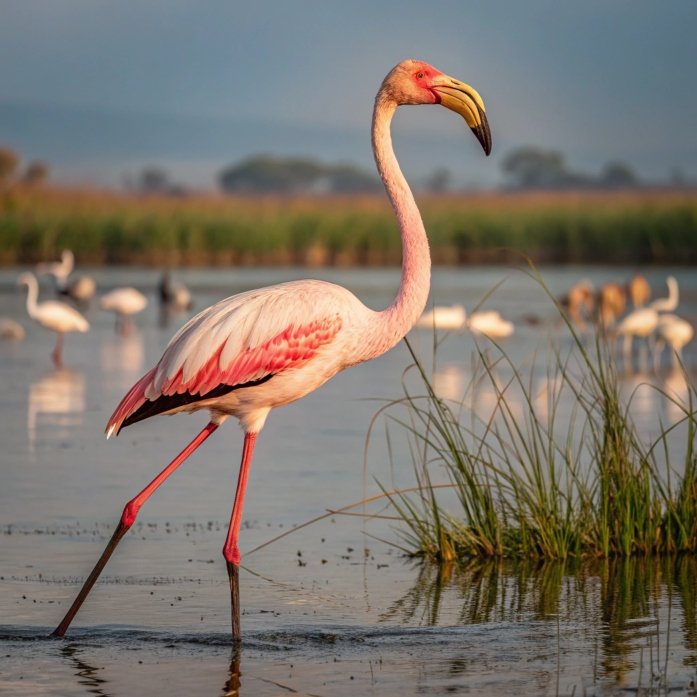
The Greater Flamingo, Phoenicopterus roseus, is perhaps one of the most iconic and recognizable long-necked birds in the world.
Known for its vibrant pink plumage and distinctive curved beak, this large wading bird is a sight to behold in its natural habitats across Africa, southern Europe, and southwest Asia.
Standing at heights of up to 1.5 meters (5 feet), the Greater Flamingo’s most striking feature is undoubtedly its long, slender neck. This elongated neck serves multiple crucial functions in the flamingo’s daily life. Primarily, it allows the bird to reach its preferred food sources in shallow waters.
The flamingo’s unique feeding method involves submerging its head upside down in the water, using its specialized beak to filter out small organisms like algae, tiny crustaceans, and mollusks. The long neck provides the necessary reach and flexibility for this inverted feeding posture.
Additionally, the flamingo’s neck plays a vital role in its social behaviors. During courtship displays, flamingos engage in synchronized neck movements, creating a mesmerizing spectacle as large flocks perform these rituals together.
The vibrant pink color of the flamingo, which extends to its neck, comes from the carotenoid pigments in its diet, making its long neck not just a functional adaptation but also a visual indicator of the bird’s health and diet quality.
FAQs
Why do some birds have such long necks?
Birds have evolved long necks for various reasons, including improved foraging capabilities, enhanced predator detection, and better reach for food sources. Long necks allow birds to access food in water bodies or on land that would otherwise be out of reach. They also provide a higher vantage point for spotting potential threats.
Which bird has the longest neck relative to its body size?
The Black-necked Stilt (Himantopus mexicanus) is often considered to have one of the longest necks relative to its body size. This wading bird’s neck appears disproportionately long compared to its small body, allowing it to forage effectively in shallow waters.
Do all long-necked birds live near water?
No, not all long-necked birds are aquatic or semi-aquatic. While many species like herons and flamingos are associated with water bodies, others like ostriches and emus are terrestrial and adapted to drier habitats. The long neck has evolved in various bird species across different ecosystems.
How do long-necked birds sleep?
Many long-necked birds sleep with their necks folded in an S-shape, often with their heads tucked under their wing or resting on their back. This position helps conserve heat and protect the head. Some species, like flamingos, can even sleep standing on one leg with their necks curved.
Are there any small birds with notably long necks?
Yes, some smaller bird species have relatively long necks. The Anhinga, also known as the snakebird, is a medium-sized water bird with a remarkably long, thin neck. Certain hummingbird species also have necks that appear long in proportion to their tiny bodies.
How do long necks affect a bird’s flight?
Long necks can pose challenges for flight, which is why many long-necked birds have adapted specific flying postures. For example, herons and cranes retract their necks into an S-shape during flight to maintain aerodynamic efficiency. Swans, on the other hand, keep their necks extended during flight.
Do long-necked birds have any disadvantages due to their neck length?
While long necks offer many advantages, they can also present challenges. Long-necked birds may be more vulnerable to certain predators, especially when their necks are extended. They may also require more energy to maintain and move their elongated necks, which can be a disadvantage in resource-scarce environments.
How do long-necked birds regulate their body temperature?
Long necks can play a role in thermoregulation. Birds can extend their necks to increase surface area for cooling or tuck them into their feathers for warmth. Some species, like the ostrich, use their long necks to radiate excess heat in hot environments.
Are there any extinct birds known for their exceptionally long necks?
Yes, some extinct bird species had remarkably long necks. The Pelagornis sandersi, an extinct seabird, had an incredibly long neck that contributed to its massive wingspan, estimated to be up to 6.4 meters (21 feet). This made it one of the largest known flying birds in Earth’s history.
How do long-necked birds protect their necks from injury?
Long-necked birds have evolved various strategies to protect their necks. Many species can quickly retract their necks or tuck them into an S-shape when threatened. Some birds, like herons, have specialized vertebrae that allow for quick strikes while hunting, which also helps in defensive maneuvers.

Hello, I’m Emily Price, the founder of Birds Affection. As a passionate bird enthusiast and spiritual seeker, I’ve always been fascinated by the symbolic meanings and mystical connections between birds and our lives. On this website, I share my knowledge and insights on the spiritual significance of various bird species, exploring their roles as messengers, guides, and teachers. Through my writing, I aim to inspire and educate others on the profound wisdom and beauty that birds bring to our world. Join me on this journey as we delve into the enchanting realm of bird symbolism and discover the hidden meanings behind these magnificent creatures.






